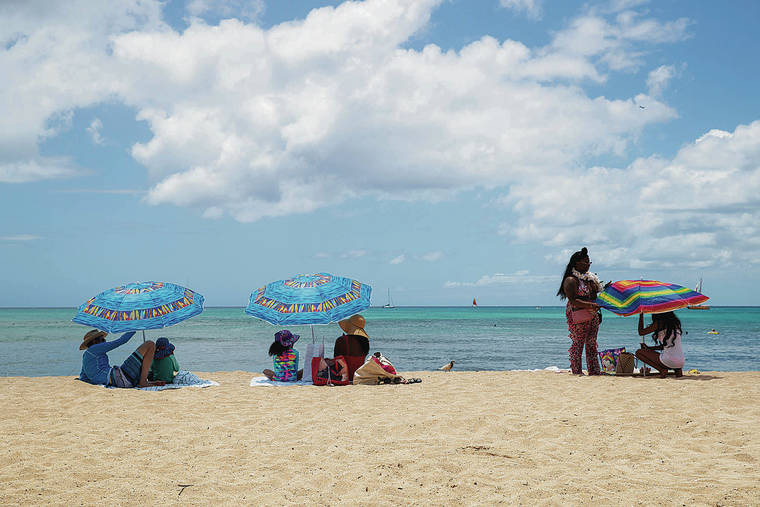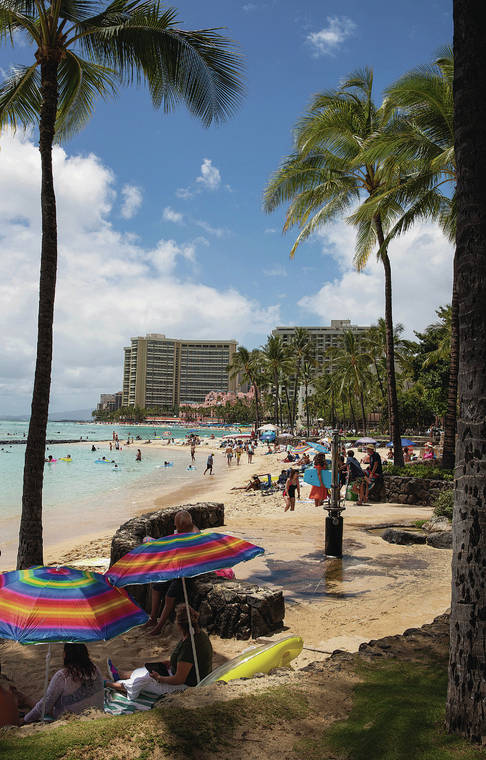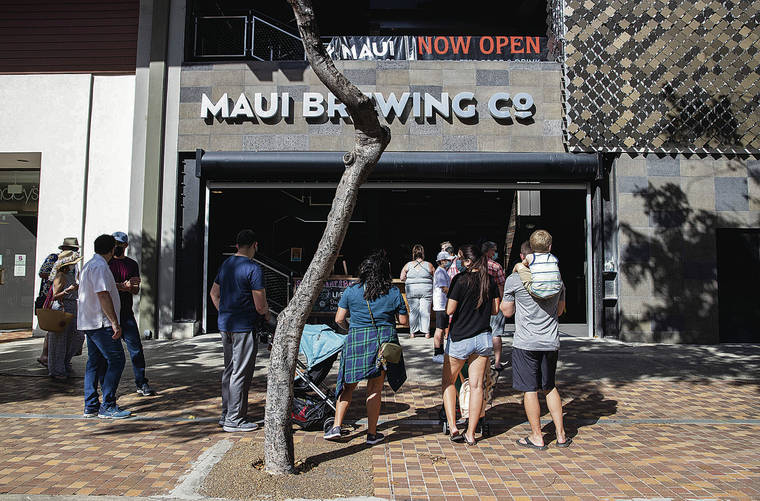Legislative cutbacks could raise the cost of a Hawaii vacation when the state’s tourism economy is trying to rebound from the pandemic-related plunge.
State legislators are expected to advance HB 862 to Gov. David Ige. The bill eliminates the $103 million county share of the transient accommodations tax but allows the counties to raise their own TAT up to 3% for up to a 10-year period.
The TAT rate is currently 10.25% of the gross rental proceeds on any transient accommodation. If the counties choose to implement the roughly 30% increase, it would raise the TAT to 13.25%.
If the change had been made in March, it would have added at least $9 to the daily cost of a hotel room, based on a $285 average daily rate. However, the potential increases ranged from a low of at least $5 a night on Oahu, where the March ADR was $184, to a high of $14 on Maui, where the March ADR was $466.
The potential rise in the TAT comes as travelers to Hawaii already are grappling with extra hassles and big hits to their budgets, said Mufi Hannemann, president and CEO of the Hawaii Lodging &Tourism Association.
“If you take it collectively across the board, it’s going to make
the Hawaii vacation a very expensive one,” Hannemann said. “The perception already is that it’s a very expensive place to come. We are across the water, the
airplane trips are higher; this just compounds that problem,” he said. “Added to that, we still have COVID testing costs and the (general excise tax).”
The bill, which came out of conference with only one dissenting vote, from Sen. Kurt Fevella, also cut the Hawaii Tourism Authority’s fiscal year 2022 budget by almost a quarter and made future funding uncertain.
Legislators used federal American Rescue Plan Act (ARPA) funds to pay for HTA’s fiscal year 2022 budget, which was reduced to $60 million from $79 million. They also used ARPA funds to pay for the Hawai‘i Convention Center’s fiscal year 2022 budget, which they cut to $11 million from $16 million.
Legislators kept HTA’s mandate focused on four pillars: marketing and branding, Hawaiian culture, the environment and the community. However, they transferred HTA’s five-member research department and its $4 million budget to the state Department of Business, Economic Development and Tourism.
Since HTA’s inception in 1998, the agency has been funded by an annual distribution of TAT special funds. Under the new proposal, HTA would have to seek an annual general fund appropriation.
The new law also took away an exemption that allowed HTA to operate outside of state procurement rules.
HTA President and CEO John De Fries said he was thankful to those in the community who sought to keep HTA’s pillars intact. De Fries said he was grateful to the legislators who worked during conference to provide more funding for HTA than was proposed in an earlier version of the bill.
At the same time, De Fries said he was concerned about the limitations of using federal funds, as well as the structural changes made to HTA.
“But we are living at a time where change is abundant, and when any of this becomes law, HTA will make the necessary changes,” he said.
HTA Chairman Rick Fried said the changes will make it difficult for HTA to stay nimble and competitive and to execute multiyear contracts. He said the cuts and structural changes also weaken the agency’s ability to provide tourism marketing and tourism management oversight.
“They claim that they are not affecting our pillars, but they aren’t standing there without funding,” Fried said. “Obviously, it will take some chinks out of those pillars, maybe worse.”
Keith Vieira, principal of KV &Associates, Hospitality Consulting, said the visitor industry is still trying to quantify the potential fallout from HB 862, which could increase the cost of a Hawaii vacation while decreasing marketing and branding resources.
“It’s ridiculous on so many levels. Everybody is flipping out,” he said. “It will increase the cost of a Hawaii vacation and make Hawaii less competitive. It’s the absolute worse time to do this. (Legislators) are reading pent-up demand for future success.”
But Sen. Glenn Wakai (D, Kalihi-Salt Lake-Aliamanu), who chairs the Senate Committee on Energy, Economic Development and Tourism, said that in his view HTA mismanaged marketing funds during the pandemic.
“Hawaii is a mature market. At some point it should sell itself,” he said. “I’ve looked at other markets in the U.S. and globally, and almost all of them spend less per visitor than Hawaii does.”
Wakai also noted that Hawaii ended up with record visitor arrivals following the 2017 rail bailout bill that took the TAT to 10.25% from 9.25%.
Wakai expects a rise in the TAT could help Hawaii reach its longtime goal of growing tourism by raising visitor spending rather than arrivals.
“Part of our problem is that we are going after more frugal tourists,” he said. “If we move the needle to making Hawaii more expensive, we’ll self-select for a more affluent tourist.”
Rep. Richard Onishi (D, South Hilo-Keaau-Honuapo), who chairs the House Committee on Labor and Tourism, said stopping the county distribution of the TAT was proposed to address accountability as well as trim costs in anticipation of a $1.4 billion shortfall.
“It’s been something that we’ve proposed previously, but in this case, this year, it was specific to us trying to fill the budget hole,” Onishi said.
“We have had issues with accountability of how the counties were utilizing the $103 million,” he said. “The original money was to offset visitor impact, and they wouldn’t provide us any accountability on how they were spending that money.”
Onishi said state legislators understand that allowing counties to raise the TAT might increase the cost of a Hawaii vacation, but said the decision is up to the counties.
The counties “will have to address that with the businesses on their island,” he said.
It’s still unclear whether the counties would choose to raise their own TAT, and if they did that, it would even make them whole.
Under the status quo, Kauai County received 14.5% of the $103 million TAT distribution; Hawaii County got 18.6%; Honolulu County got 44.1%; and Maui County received 22.8%.
In fiscal year 2019 HTA helped bring $631 million in TAT collections to the state. But while tourism has enjoyed a spring break rebound, full recovery is still some years out.
State economist Eugene Tian said the Hawaii Council on Revenues in March estimated TAT revenues for
fiscal year 2020 at $560.6 million and at just $184.5 million for fiscal year 2021.
The counties’ TAT share has been frozen since Ige turned off distributions in the midst of the COVID-19 crisis, which dropped TAT collections and distributions substantially.
For example, Sarah
Blane, Kauai County spokeswoman, said the county received $14.9 million in TAT distributions
in fiscal year 2019 and
$12.4 million in fiscal year 2020.
Hawaii island Mayor Mitch Roth said the Big Isle’s TAT distribution was $19.5 million in fiscal year 2019, and it was $15 million in fiscal year 2020.
Roth said losing that amount leaves the county with a “pretty tough hill to climb.”
On the other hand, Roth said he’s mindful that raising the TAT could harm Hawaii’s visitor industry.
“It may bring in more, but then again, it may bring in
significantly less — especially if we have significantly less people coming to Hawaii,” he said. “Which raises a bigger issue with employment and people in the hospitality industry. A lot of the people who are struggling now are those same people, and that’s really concerning that we may be piling on and really doing something that takes the Hawaii brand and sets us back for years to come.”






